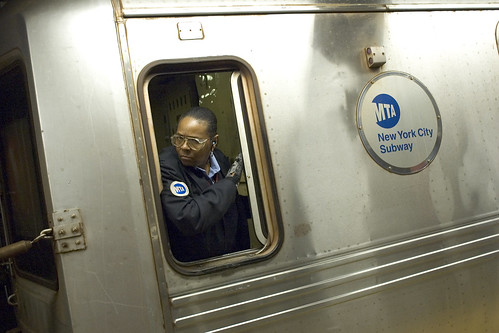
Roger Taillon test drives a new at Vespa at Vespa of Newport Beach in Newport Beach, Calif., Saturday, April 18, 2009. Under the federal stimulus package, taxpayers can deduct sales and excise taxes on the purchase of a new motorcycle or scooter, and get a 10 percent federal tax credit if they buy plug-in bikes. (AP Photo/Chris Carlson)
Sales of motorcycles and scooters shifted into high gear last year when gas prices soared. Then recession-wary consumers hit the brakes.
Now, like so many other industries, the makers of two-wheeled, fuel-efficient bikes are relying on tax breaks offered in the federal stimulus package and other incentives to get sales moving again, while easing gas consumption.
“Even before we quote the price, we tell people how much they can get off the bike,” said Jeff Bosco Biafore, a salesman at the San Jose Motorsport Scooter Center in Northern California.
Under the stimulus plan, the same provision that lets taxpayers deduct sales and excise taxes on the purchase of a new car or truck also applies to a motorcycle or scooter. They also can get a 10 percent federal tax credit if they buy plug-in bikes.
Before the federal incentives kicked in Feb. 17, California offered a $1,500 rebate for certain electric scooters, but there were so many applications that funding for the $1.8 million program for alternative fuel vehicles ran out.
Recently, state air quality regulators approved an additional $5 million in grants for plug-in cars and motorcycles.
With a new job that stretched her commute from 10 to 40 miles a day, freelance film and television editor Cindy Parisotto says she is considering an electric scooter to reduce her commuting costs and carbon footprint.
She’s interested in an electric scooter from Vectrix Corp. that has a top speed of 62 mph and a range of at least 35 miles per charge. She would need to charge the bike everyday, but Parisotto says she figures her electricity bill will be lower than what she spends on gas.
The $10,000 bike also comes with a $450 rebate from the company, meaning she could save about $2,000.
One analyst says the tax breaks, especially for non-electric models, aren’t enough to make a difference.
“It’s a bit of a break, but it may not be enough if you lost your job or if there’s a lot of pressure on your paycheck,” says Robin Diedrich, senior consumer analyst for Edward Jones. “You don’t buy a motorcycle because of $300 in tax savings.”
The cost of a new scooter ranges from $1,000 to $10,000, while motorcycles can cost anywhere from $3,000 to more than $10,000, depending on the model.











